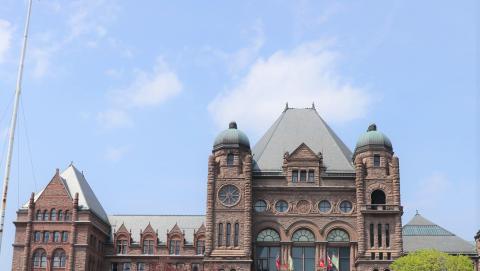Overview
Ontario municipalities manage nearly half a trillion dollars worth of infrastructure, including roads and bridges, water and wastewater, recreation facilities, social housing, public transit, and more. In 2022, municipalities invested almost $65 billion in annual revenues on local services and infrastructure.
AMO estimates that Ontario municipalities are planning for between $250 billion and $290 billion in capital investments over the next ten years, with $100 billion of that related to growth. While adapting to future needs like climate change response will increase the cost of infrastructure, not investing in the future would cost more.
Municipalities rely primarily on property taxes to generate the revenues needed to conduct their business. Ontarians currently pay the second highest property taxes in the country, at $2,200 per capita, in part because municipalities deliver the broadest range of services in the country, and own and operate the majority of public infrastructure.
Vote like your quality of life depends on it
On January 19th, AMO launched a non-partisan public affairs campaign, Vote like your quality of life depends on it, in advance of a potential provincial election. The campaign calls for clear commitments in from all provincial parties in three main areas where provincial partnership can improve quality of life and community well-being:
curbing reliance on municipal property taxes to fund provincial responsibilities:
- investing in local infrastructure to build housing; and,
- tackling homelessness.
AMO has developed a news release to support this campaign.
AMO Positions
- Municipalities face increasingly complex challenges without the financial tools to solve them. Property taxpayers, including people on fixed incomes and struggling small businesses cannot afford to subsidize income redistribution, investment for those most in need, and significant capital investments.
- Ontario is planning on historic growth, with a housing target of over 1.5 million homes by 2031. With Ontario municipalities planning to meet this challenge significant capital expenditures will be needed over the next decade which cannot be funded by municipalities alone. All levels of government need to play a role in ensuring Ontario's infrastructure supports economic prosperity and quality of life in the long-term.
- AMO is calling on the provincial government to sit down with municipalities and work together on a joint review of municipal finance, including a detailed analysis of Ontario’s infrastructure investment and service delivery needs.
Resources









